A hot water heat pump offers a clear path to a cleaner, greener home and plays a vital role in New Zealand’s shift to renewable energy. By drawing warmth from the air rather than relying solely on electric elements, these systems use less electricity.
At A2W, we help Kiwi households in Wellington, the Hutt Valley, Wairarapa, Kapiti, Horowhenua, and Palmerston North choose the right heat pump, whether you opt for a split system paired with your existing cylinder or an all‑in‑one integrated model. We have units that use low‑GWP refrigerants, and we back every recommendation with a free “site unseen” estimate followed by expert on‑site confirmation.
Why should this matter to you?
For one, this could be one of your ways to help support NZ’s clean energy future plans.
In this article, we explore 8 ways in which the use of hot water heat pumps can aid you in reducing emissions, easing grid demand, and delivering real savings for your household.

Our hot water heat pumps use roughly 70 per cent less electricity than standard electric cylinders. This efficiency gain translates directly into lower carbon emissions for every home we equip.
When we size and install a system at a COP of 4, for example, a typical 300-litre cylinder that would consume about 3,000 kWh per year with elements instead draws only 750 kWh. At New Zealand’s grid average of 0.09 kg CO₂‑equivalent per kWh, that cuts roughly 210 kg CO₂ yearly.
How do we ensure those savings:
By removing guesswork and focusing on proven performance data, our hot water heat pump installations consistently deliver close to that 70–75 per cent electricity reduction, making a clear dent in your household’s carbon footprint.
Every kilowatt‑hour saved by a heat pump eases pressure on the wider electricity network. The grid‑scale impact is significant when many homes switch over to hot water heat pumps.
If, for example, 10,000 Wellington-region homes adopted heat pumps each saving 2,250 kWh annually, that would free up 22.5 GWh of generation capacity per year. At winter peaks, this load reduction helps prevent brown‑outs, delays costly network upgrades and can even dampen wholesale price spikes.
Our approach to demand reduction:
Through these measures, our installations not only deliver household benefits but also contribute to a more stable, efficient electricity system for all New Zealanders.

New Zealand’s grid relies heavily on renewable sources, over 80 per cent hydro, plus wind and geothermal, but still needs to balance variable output with demand. Our heat pumps, by reducing instantaneous draw and enabling smart run scheduling, align perfectly with this mix.
Key renewable‑support features:
Our emphasis on COP efficiency and controller programming means every heat pump we fit can run primarily on renewable energy, maximising your home’s contribution to a low‑carbon grid.
We ensure every system we recommend appears on EECA’s Hot Water Heat Pump register, one of the key eligibility criteria for schemes such as Warmer Kiwi Homes.
How A2W simplifies grant access:
By focusing on EECA‑registered equipment and proven installer credentials, we’ll remove compliance guesswork, helping eligible homeowners secure partial rebates on installation costs and making efficient heating solutions more affordable.
Swapping out gas and electric‑element water heating for heat pumps is universally recognised as one of the fastest household measures to cut fossil emissions. Every COP‑driven kilowatt‑hour saved reduces building‑sector CO₂, roughly 15 per cent of national emissions.
Our role in net-zero homes:
By delivering reliably efficient systems, A2W helps homeowners play a direct part in New Zealand’s journey to net zero. Our installations ensure water heating becomes a driver of emissions decline rather than a growing source.

We prioritise modern refrigerants, R290 (propane), CO₂ (R744), whose Global Warming Potentials (GWP) range from 1 to under 3, compared to the GWP of ~1,430 for R134a.
Why lower‑GWP matters:
Time‑of‑use and controlled‑load tariffs reward households that shift major loads to off‑peak hours. Our heat pumps, with their COP‑derived efficiency and flexible run programming, are ideal for maximising those rate differentials.
Tariff‑saving strategies:
Even without smart modules, the inherent COP advantage means a heat pump uses less energy to deliver the same hot‑water output, so billing spikes during expensive peak periods shrink automatically.
The combination of up to 70 per cent electricity reduction and free, transparent quotes offers tangible relief for cost‑sensitive households.
Hardship‑focused support:
By lowering both running and upfront costs, A2W systems help keep bills manageable and energy hardship numbers in check.
Switching to a hot water heat pump from A2W is one of the most straightforward steps any household can take toward a low‑carbon future. Our lower North Island experts deliver:
By harnessing ambient heat rather than relying on elements alone, you not only save on bills but also ease grid stress, support renewable integration and cut household emissions. Contact A2W today to schedule your no‑obligation quote and join the wave of Kiwi homes embracing smarter, greener hot water heating solutions.

Privacy Policy | This site is protected by reCAPTCHA and the Google Privacy Policy and Terms of Service apply.